Quang Nam is a province in Vietnam South Central Coast. The name Quang Nam means extending to the South. With the area of 10.440 square kilometers and the population of more than 1.4 million people (2014), Quang Nam ranks the 6th in the size and the 19th in the population among 63 provinces and cities of Vietnam.
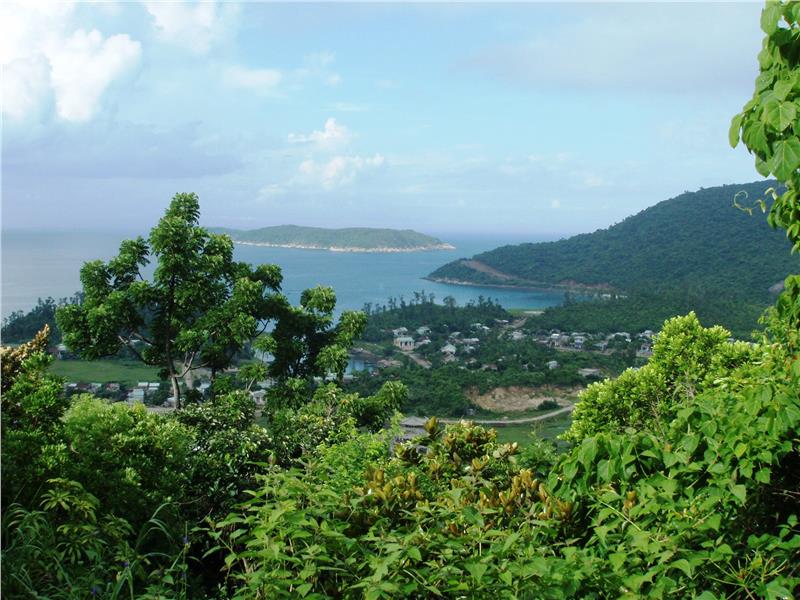
Quang Nam is located about 860km far from Hanoi to the north, 865km away from Ho Chi Minh City to the south, in the South Central Coast. The province borders Thua Thien Hue and Da Nang to the north, Quang Ngai and Kon Tum to the south, Sekong province (People's Democratic Republic of Laos) to the west and the South China Sea to the east. The total natural area of Quang Nam is 10,438 square kilometers. Quang Nam terrain is sloping from West to East, and divided into 3 areas including mountainous region in the west, midland and coastal delta in the east. Quang Nam situates in the tropical monsoon climate; the average temperature is over 25°C; the annual average rainfall reaches 2000 - 2500mm of which more than 70% of rainfall focus on three months October, November and December. Vu Gia Thu Bon and Tam Ky are 2 majors rivers.
Tropical broadleaf evergreen forests are dominant ecotype of Quang Nam. This is one of the provinces with the largest forested area in the country. Song Thanh special-use forest is the largest conservation area of the province where wild animals in the center of Truong Son are being preserved. Quang Nam has 125km coastline with many famous and stunning beaches as Ha My (Dien Ban), Cua Dai (Hoi An), BInh Minh (Thang Binh), Tam Thanh (Tam Ky), Bai Rang (Nui Thanh)... Cu Lao Cham with the diverse ecosystem was recognized as the world's biosphere reserve. In general, the natural condition of Quang Nam has many advantages and potentials for unique and vibrant cultural development, tourism development (cultural tourism, ecotourism).
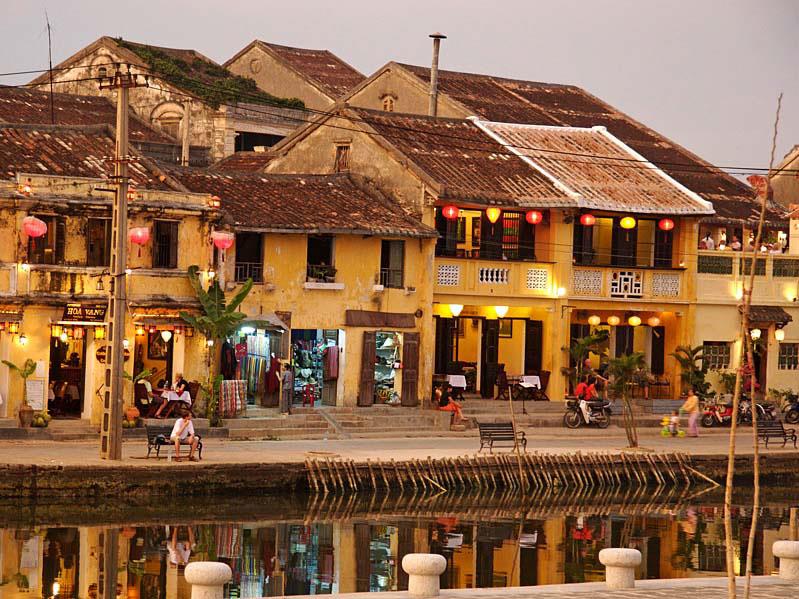
Previously, Quang Nam belonged to Chiem Thanh. In 1306 following the agreement between Champa King Sinhavarman III and King Tran Nhan Tong, Sinhavarman III offered Chau O or Thuan Chau (south of Quang Tri, Hue) and Chau Ri (part of Hue, north Thu Bon river) as betrothal gifts to marriage King Tran Nhan Tong's daughter, Princess Huyen Tran. Vietnamese people gradually settled in two new areas; Champa people moved to the remaining lands in the south of the kingdom.In 1471, after conquering the southern land of Thuan Hoa to Cu Mong Pass, King Le Thanh Tong established the 13th administrative unit- Thua Tuyen Quang Nam including 3 palaces: Thang Hoa, Tu Nghia and Hoai Nhon (Quang Nam, Quang Ngai and Binh Dinh). The name Quang Nam appeared since then.
During the period of Trinh - Nguyen family war, Quang Nam was dominated by Lord Nguyen (from 1570). Hoi An was chosen as the only trading port with the world at that time, so foreign businessmen called this land as "Quang Nam Quoc". In 1888, under the reign of King Thanh Thai, Da Nang was separated from Quang Nam to become the land of French concession.After Geneva Agreement, Quang Nam under Republic of Vietnam in 1956 was divided into 2 new provinces in cluding Quang Nam in the north with 9 wards and Quang Tin in the south with 6 wards. After unification, two province were merged again into Quang Nam.In 1997, in the 10th session of National Assembly, Quang Nam Da Nang was divided into 2 independent administrative units including Da Nang City and Quang Nam.
Quang Nam currently has 18 administrative units including Tam Ky City, Hoi An City, Dien Ban Town, Thanh Binh District, Bac Tra My District, Nam Tra My District, Nui Thanh District, Phuoc Son District, Tien Phuoc District, Hiep Duc District, Nong Son District, Dong Giang District, Nam Giang District, Dai Loc District, Phu Ninh District, Tay Giang District, Duy Xuyen District and Que Son District.
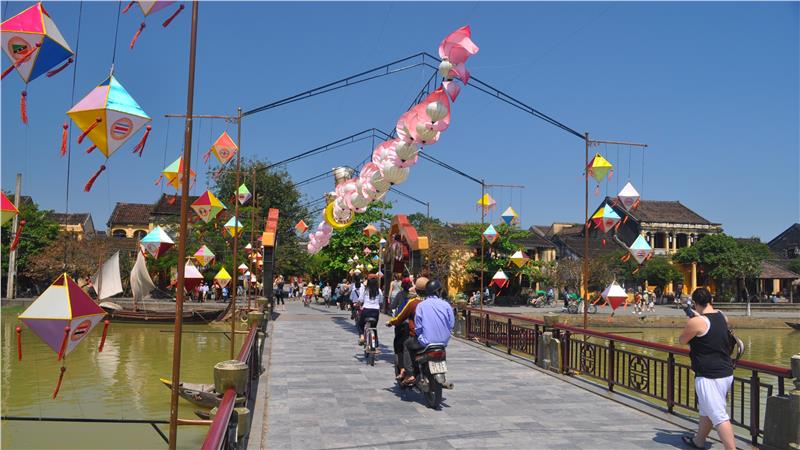
According to population census in 2014, Quang Nam population is more than 1.4 million people. The average population density is 140 people/ km² (ranking the 45th among 63 provinces and cities). The population density of Tam Ky, Hoi An and Dien Ban is more than 1000 people/ km² while the population in mountainous districts is sparse. The average population density of 6 mountainous districts including Dong Giang, Tay Giang, Nam Giang, Phuoc Son, Bac Tra My and Nam Tra My is less than 20 people/ km². With 81.4% of the population living in rural areas, the proportion of Quang Nam people living in rural areas is higher than the average rate of the country. There are 34 ethnic groups living together in Quang Nam, of which Kinh ethnic people cover the majority population of Quang Nam accounting for 91.1%. The proportions of other communities are relatively Cotu (3.2%), Xo Dang (2.7%), Gie Trieng (1.3%). 29 other ethnic groups account for 0.9% of population.
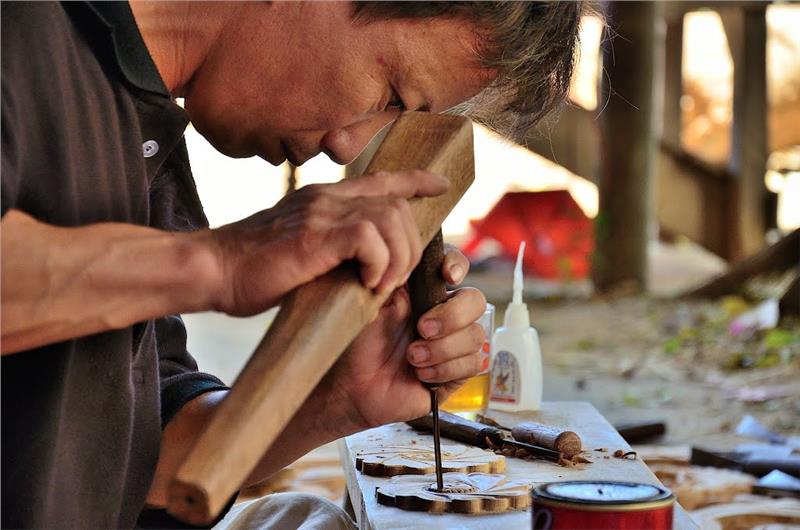
In 2014, thanks to the efforts of all departments, sectors, enterprises and people, Quang Nam economy had positive changes and significant results in many fields. The consumer price index was stable, rising in the national average level. Deposit rates and lending rates continued to fall and stabilize; interest rates fell by 2% compared with the end of 2013. The total export turnover reached 660 million USD, increasing 17.6 compared to 2013. Many items have high export value. Import machinery serving the manufacturing industry. The state budget revenue increased and exceeded the year's estimate. The domestic revenue increase by 16% over 2013 and exceeded 12% of the estimate, the revenue from import and export activities exceeded more than 46% of the year's estimate.
The gross domestic product of region increased by 11.5%compared to 2013 reaching the plan. Economic structure continued to shift positively, industry-construction and service increased and accounted for 83%, agriculture-forestry-fishery decreased, accounted for 17%. The industrial production value increased by 12% capered to 2013. The production value of service increased by 16% compared to 2013. Total retail sales of goods and services reached 29.000 billion dong, increasing more than 20%. Many promotional activities and cooperation tourism development at home and aboard were organized. The number of visitors reached 4.3 arrivals. Revenue from Quang Nam tourism reached 3,400 billion, up 12% over 2013. The production value of agriculture-forestry-fishery increased nearly 6%, higher than that of 2013.
Many cultural activities held ebulliently on the occasion of the major holidays of the year. Timely implement public policies and social welfare for those with distinguished services to the country. Supportive housing program for those with distinguished services to the country continues to be done. In 2014, the province built and repaired 3063 houses. Over two years 2013-2014, the central budget and the provincial budget supported to build and repair more than 9541 houses, basically completed stage.The inspection, monitoring, proactive prevention of social diseases is regularly maintained, thereby, the epidemics is controlled well.
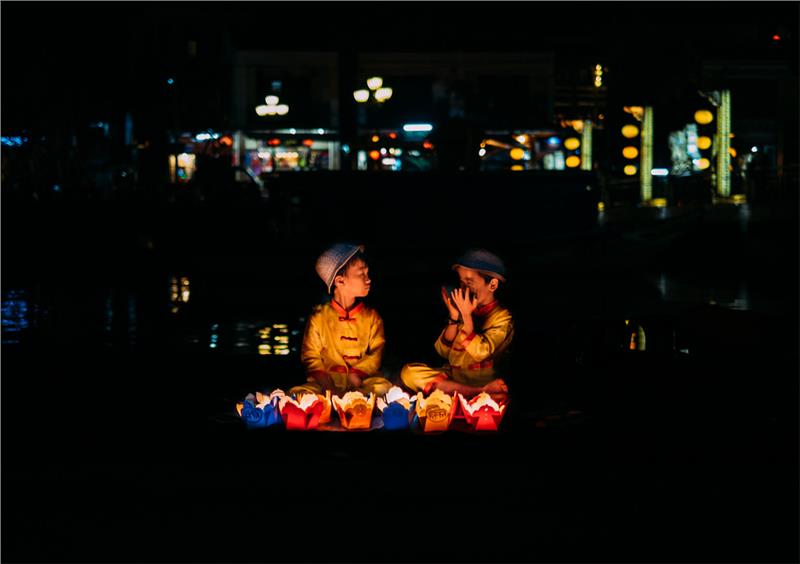
Quang Nam Cultural region is formed in the overall culture of central region.Quang Nam culture is formed in the overall culture of Central region. Located in the midpoint of the country, according to the North-South axis, Quang Nam is the reconciliation of cultural nuances between two regions and cultural exchanges with outside which contribute to the rich tradition of Quang Nam and the unique cultural identity.
Coming to Quang Nam, tourists can contemplate the beauty of ancient architectural works reaching the peak of art. There are 2 world cultural heritages recognized by UNESCO including Hoi An Ancient Town and My Son Sanctuary with the typical cultural values of humanity. Hoi An town is the convergence of various cultural nuances of Vietnamese people, Chinese, Japanese and European since the 16th century. Hoi An is one of the few towns preserved relatively intact with a rich and diverse architectural complex. Quang Nam is also the place that stores hundreds of ancient Vietnamese architectural works as temples, pagodas, literature temple, houses, etc dating back 300 to 500 years ago. These relics not only have the values of culture and art but also bring important historical significance, reflecting the long-standing development of a cultural area. Tra Kieu ancient capital, Khuong My cham towers, Chien Dan, Bang An, Dong Duong Buddhist Institute is the place recording the brilliant imprints of Sa Huynh Culture, Cham Culture and Dai Viet Culture.
The cultural values of Quang Nam not only shine from the ancient architectural works but also is made up of unique colorful culture embodied in the traditions, customs and habits and festivals of ethnic groups living in this land. This is an invaluable asset and the pride of Quang Nam people. Referring Quang Nam culture, we cannot but mention to the folklore treasury as Ve Quang, ho di cay, ho xay lua, ho tat muoc, bai choi singing... With the valuable tangible and intangible cultural values, Quang Nam is really a vibrant cultural sub-region in Vietnamese culture.
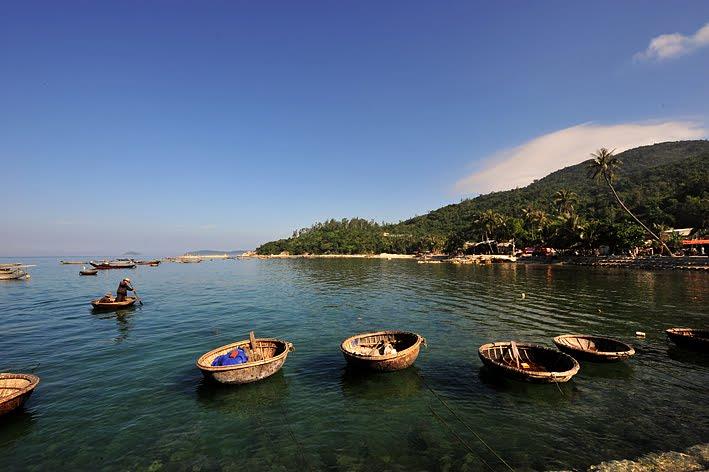
Quang Nam is the land of cultural tradition in Central Vietnam, the convergence of world cultural and natural recognized by UNESCO including Hoi An Ancient Town, My Son Sanctuary and Cu Lao Cham - the world's biosphere reserve. Hoi An Ancient Town is located about 30km far from Da Nang city to the southeast, about 60km away from Tam Ky city to the northeast. From the late16th century, Hoi An was the International Trade Center on the commercial route East - West, the most prosperous commercial port in Dang Trong during the reign of Lords Nguyen, because merchant ships from Japan, China, Portugal, Spain, Netherlands and so on often came here to exchange, purchase and sell goods.
Hoi An preserved relatively intact an ancient architectural complex including houses, communal houses, temples, pagodas, well, bridge, clan ancestral houses, port, markets and streets. The landscape of Hoi An is covered by an ancient mossy color as a vivid picture. This is considered a lively museum in architecture and urban lifestyle. Japanese Covered Bridge (Cau Pagoda) is an architectural works constructed by Japanese traders in Hoi An in the early 17th century. Due to the impact of natural disaster, Japanese Covered Bridge was restored many times and gradually losen the Japanese architectural elements, instead Vietnamese architecture style. It is an invaluable asset and has been selected as the official symbol of Hoi An.Quan Thang Ancient House (77 Tran Phu, Hoi An)is one of the most beautiful ancient houses in Hoi An today. The house dates back more than 150 years bearing the architectural style of Hoa Ha, China. Over the years, the house has still been preserved relatively intact on the architectural design and interiors, is the evidence for the most brilliant time of Hoi An when trade activities with foreign partners flourished and rich traders built luxury houses.
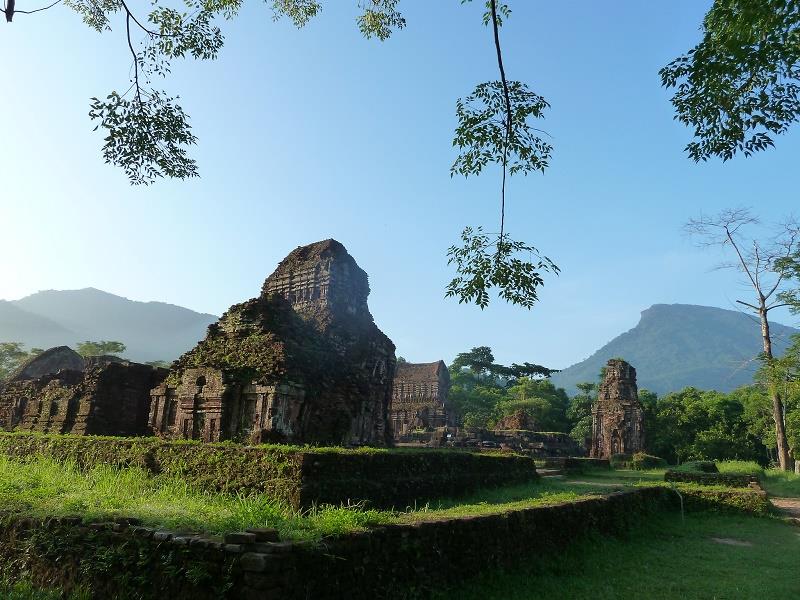
Located in Duy Phu commune, Duy Xuyen district, My Son Sanctuary can be said to be the pinnacle of Cham culture. This is the place where religious rituals of Cham dynasties took place and royal tombs were constructed. Despite its modest scale, My Son Sanctuary has cultural, historical and architectural values which are considered equal to those of Angkor Wat in Cambodian, Pagan in India and Borobudur in Indonesia. Cu Lao Cham - the world's biosphere reserve Located about 18km from Cua Dai Beach (Hoi An) to the South China Sea, Cu Lao Cham is an archipelago including 8 small islands: Hon Lao, Hon Kho Me, Hon Kho Con, Hon Tai, Hon dai, Hon Mo, Hon La and Hon Ong. In Cu Lao Cham, there are fishing villages and beautiful beaches as the tale "The Old Man and The Sea" by Hemingway. Under the sea, there are many sparkling coral reefs creating magical aquarium with thousand of fishes and tropical seafood. Coming to Cu Lao Cham, tourists can mingle in the fresh air of the sea with the golden sands, blue waters, explore the daily lives of the residents in fishing villages; admire the charm of many legendary landmarks as Huong beach, Lang beach, Ba cave, Au Thuyen, Hai Tang pagoda... or conquer the majestic hills, participate in campfire and enjoy famous specialties. Few years ago, Cu Lao Cham Island was recognized as the world biosphere reserve by UNESCO.
Festival

Typical cultural values of Quang Nam is deposited in the festivals, in the customs and habits, traditions; is extracted from the labor process, thinking, behaviors of the ethnic communities living together in this land. Quang Nam festivals bears the characteristics of traditional folklore. All bear elements of belief, spirituality, held every year to pray for good weather, prosperous country; to honor those ancestors; towards the roots and traditions of the nation and express the desire to reach the beautiful soul of people here. Typical festivals consist of Goddess Thu Bon Festival, Chiem Son Festival, Carnival Hoi An and Hoi An New Moon Festival. Goddess Thu Bon festival is a folk festival of people living along Thu Bon River to pray from good weather and prosperous lives. The festival is held on December of the2rd lunar month.Carnival Hoi An is the street festival held for the first time in Hoi An on New Year's Eve in 2009. The festival is modeled Street Carnivals in Europe and Latin America. New Moon Festival is held on every 14th evening of lunar month in Hoi An Old Town. At this time, local people will all buildings turned off their white lights leaving only the colored lanterns to cast warm glow over the buildings and off the water. Unlike modern streets, Hoi An becomes so poetic at night without electricity. Tourists are enchanted by this space because they seem to be lost in an ancient space in modern time.
